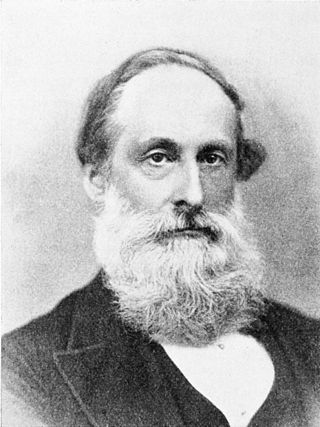
Daniel Hack Tuke was an English physician and expert on mental illness.
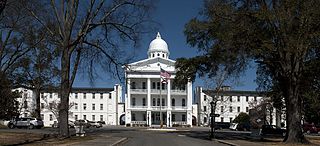
Bryce Hospital opened in 1861 in Tuscaloosa, Alabama, United States. It is Alabama's oldest and largest inpatient psychiatric facility. First known as the Alabama State Hospital for the Insane and later as the Alabama Insane Hospital, the building is considered an architectural model. The hospital houses 268 beds for acute care, treatment and rehabilitation of full-time (committed) patients. The Mary Starke Harper Geriatric Psychiatry Hospital, a separate facility on the same campus, provides an additional 100 beds for inpatient geriatric care. The main facility was added to the National Register of Historic Places in 1977.

The Utica Psychiatric Center, also known as Utica State Hospital, opened in Utica on January 16, 1843. It was New York's first state-run facility designed to care for the mentally ill, and one of the first such institutions in the United States. It was originally called the New York State Lunatic Asylum at Utica. The Greek Revival structure was designed by Captain William Clarke and its construction was funded by the state and by contributions from Utica residents.

Thomas Story Kirkbride was a physician, alienist, hospital superintendent for the Institute of the Pennsylvania Hospital, and primary founder of the Association of Medical Superintendents of American Institutions for the Insane (AMSAII), the organizational precursor to the American Psychiatric Association. Along with Benjamin Rush he is considered to be the father of the modern American practice of psychiatry as a specific medical discipline. His directive and organization of institutions for the insane were the gold-standard of clinical care in psychiatry throughout the 19th century.

Central State Hospital, formerly referred to as the Central Indiana Hospital for the Insane, was a psychiatric treatment hospital in Indianapolis, Indiana. The hospital was established in 1848 to treat patients from anywhere in the state, but by 1905, with the establishment of psychiatric hospitals in other parts of Indiana, Central State served only the counties in the middle of the state. In 1950, it had 2,500 patients. Allegations of abuse, funding shortfalls, and the move to less institutional methods of treatment led to its closure in 1994. Since then efforts have been made to redevelop the site for various uses.

Isaac Ray was an American psychiatrist, one of the founders of the discipline of forensic psychiatry. In 1838, he published A Treatise on the Medical Jurisprudence of Insanity, which served as an authoritative text for many years.
The Association of Medical Superintendents of American Institutions for the Insane, also known as The Superintendents' Association, was organized in Philadelphia in October, 1844 at a meeting of 13 superintendents, making it the first professional medical specialty organization in the U.S.
The Opal (1851–1860) is a ten volume journal written, edited and printed by the patients of the Utica State Lunatic Asylum, circa 1851. On its more than 3,000 pages, writers talked of their experiences and world views, giving great insight to the environment of New York's premiere state-operated Asylum, in Utica, New York. Themes that continuously arose in the poetry, prose, political commentary, and articles about insanity include issues concerning medication, restraint, seclusion, human rights, liberty, overcoming oppression, and support.
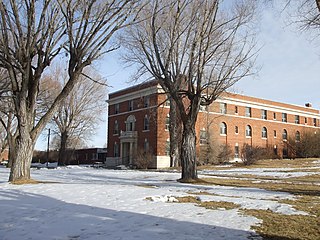
Asylum architecture in the United States, including the architecture of psychiatric hospitals, affected the changing methods of treating the mentally ill in the nineteenth century: the architecture was considered part of the cure. Doctors believed that ninety percent of insanity cases were curable, but only if treated outside the home, in large-scale buildings. Nineteenth-century psychiatrists considered the architecture of asylums, especially their planning, to be one of the most powerful tools for the treatment of the insane, targeting social as well as biological factors to facilitate the treatment of mental illnesses. The construction and usage of these quasi-public buildings served to legitimize developing ideas in psychiatry. About 300 psychiatric hospitals, known at the time as insane asylums or colloquially as “loony bins” or “nuthouses,” were constructed in the United States before 1900. Asylum architecture is notable for the way similar floor plans were built in a wide range of architectural styles.

Dr William Alexander Francis Browne (1805–1885) was one of the most significant British asylum doctors of the nineteenth century. At Montrose Asylum (1834–1838) in Angus and at the Crichton Royal in Dumfries (1838–1857), Browne introduced activities for patients including writing, group activity and drama, pioneered early forms of occupational therapy and art therapy, and initiated one of the earliest collections of artistic work by patients in a psychiatric hospital. In an age which rewarded self-control, Browne encouraged self-expression and may therefore be counted alongside William Tuke, Vincenzo Chiarugi and John Conolly as one of the pioneers of the moral treatment of mental illness. Sociologist Andrew Scull has identified Browne's career with the institutional climax of nineteenth century psychiatry.
"Browne was one of the reformers of the asylum care of the insane whose improvements and innovations were chronicled in his annual reports from The Crichton Royal Institution, but who in addition published almost on the threshold of his career a sort of manifesto of what he wished to see accomplished...." Richard Hunter and Ida Macalpine (1963) Three Hundred Years of Psychiatry 1535–1860, page 865.

Sir John Batty Tuke PRCPE FRSE LLD was one of the most influential psychiatrists in Scotland in the late nineteenth century, and a Unionist Member of Parliament (MP) from 1900 to 1910. Tuke's career in Edinburgh from 1863 to 1910 spanned a period of significant social and political changes in asylum governance and care in Scotland. Tuke's professional success in public and private practice and his powerful role in several prominent medical societies allowed him to influence his colleagues toward a more physiological understanding of mental illness and its treatment.

Sir John Charles Bucknill was an English psychiatrist and mental health reformer. He was the father of judge Sir Thomas Townsend Bucknill QC MP.

Winnebago Mental Health Institute (WMHI), formerly the Winnebago State Hospital, is a psychiatric hospital near Oshkosh, Wisconsin, United States located in the unincorporated community of Winnebago, Wisconsin.

Henry Mills Hurd was the first director of the Johns Hopkins Hospital and remained in that post for 22 years (1889–1911) following which he was appointed Secretary to the Board of Trustees (1911–1927). He was also the first Professor of Psychiatry at the medical school from its opening in 1893 until 1905.
Middletown State Homeopathic Hospital was a hospital for the treatment of mental disorders located in Middletown, New York. It opened on April 20, 1874, and was the first purely homeopathic hospital for mental disorders in the United States. The hospital, which served "mentally ill patients from Orange, Sullivan and Ulster Counties". employed a number of new techniques for the treatment of mental disorders, most notably the use of baseball as a therapy.
John Curwen (1821–1901) was Superintendent of the first public mental hospital in Pennsylvania. He personally knew the thirteen founders of the Association of Medical Superintendents of American Institutions of the Insane (AMSAII), now the American Psychiatric Association. He served as secretary-treasurer of the Association for 34 years (1856–1890).
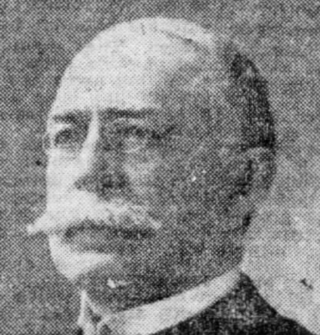
Edward Cowles, an American psychiatrist, was the medical superintendent of the McLean Hospital in Massachusetts from 1879 to 1903. He was among the first hospital superintendents to advocate for hospital functions that encompassed patient treatment, research, and teaching.
George Alder Blumer, M.D. was a physician, a mental hospital administrator, and a journal editor. He was a leader in the provision of humanitarian care for mental hospital patients.
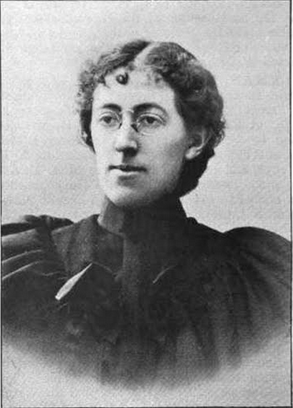
Anne Hazen McFarland was an American physician and medical journal editor who specialized in the treatment of mental illness in women. She criticized the contemporary idea that gynecological disorders caused insanity and nervousness in women.

Mendocino State Hospital, formally known as Mendocino State Asylum for the Insane, was a psychiatric hospital located in Talmage near Ukiah, California. It was established in 1889 and in operation from July 1893 to 1972. The hospital programs included the rehabilitation of the criminally insane, alcoholic and drug abuse rehabilitation, a psychiatric residency program, industrial therapy, and others. The property now is part of the City of Ten Thousand Buddhas community.














